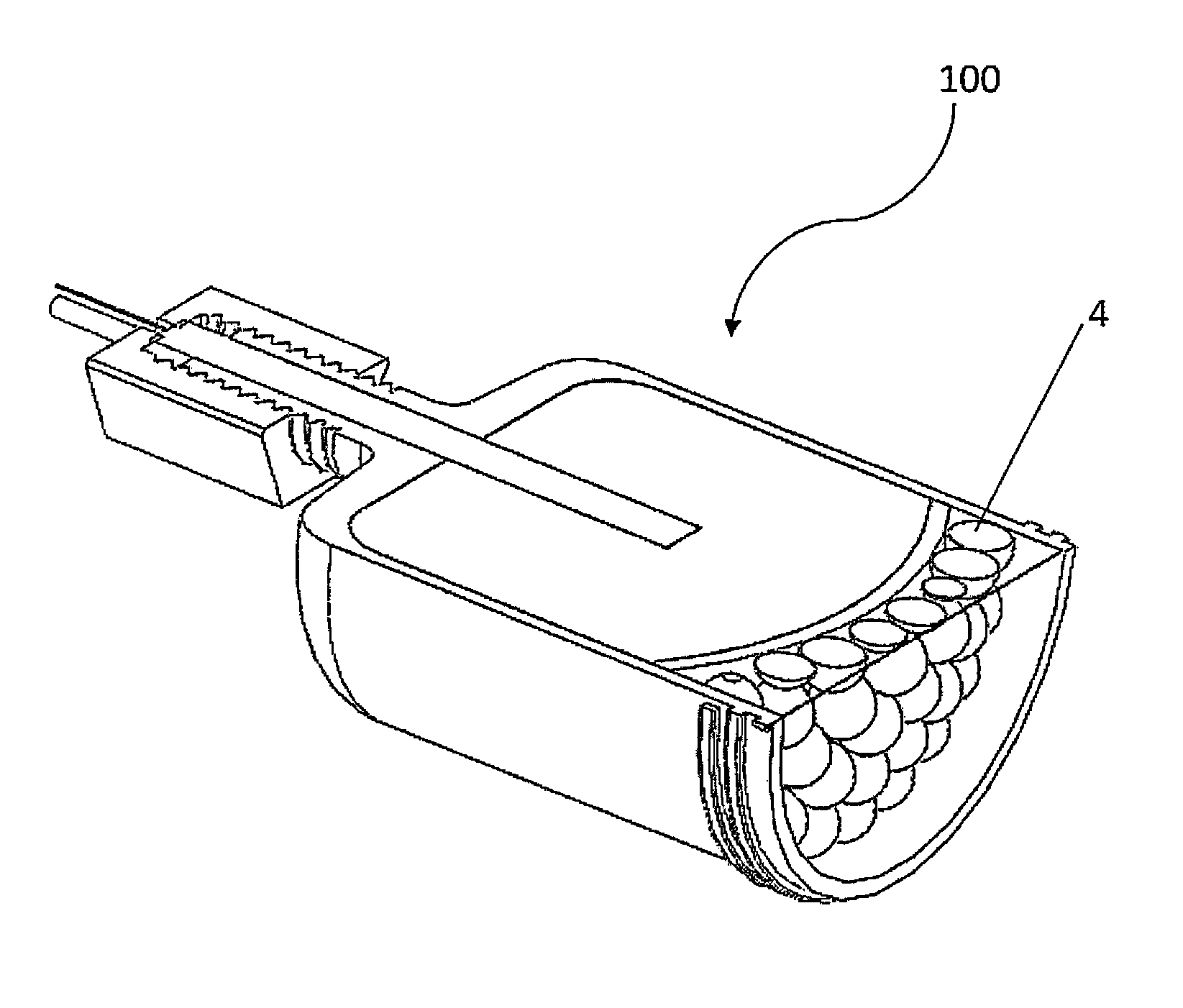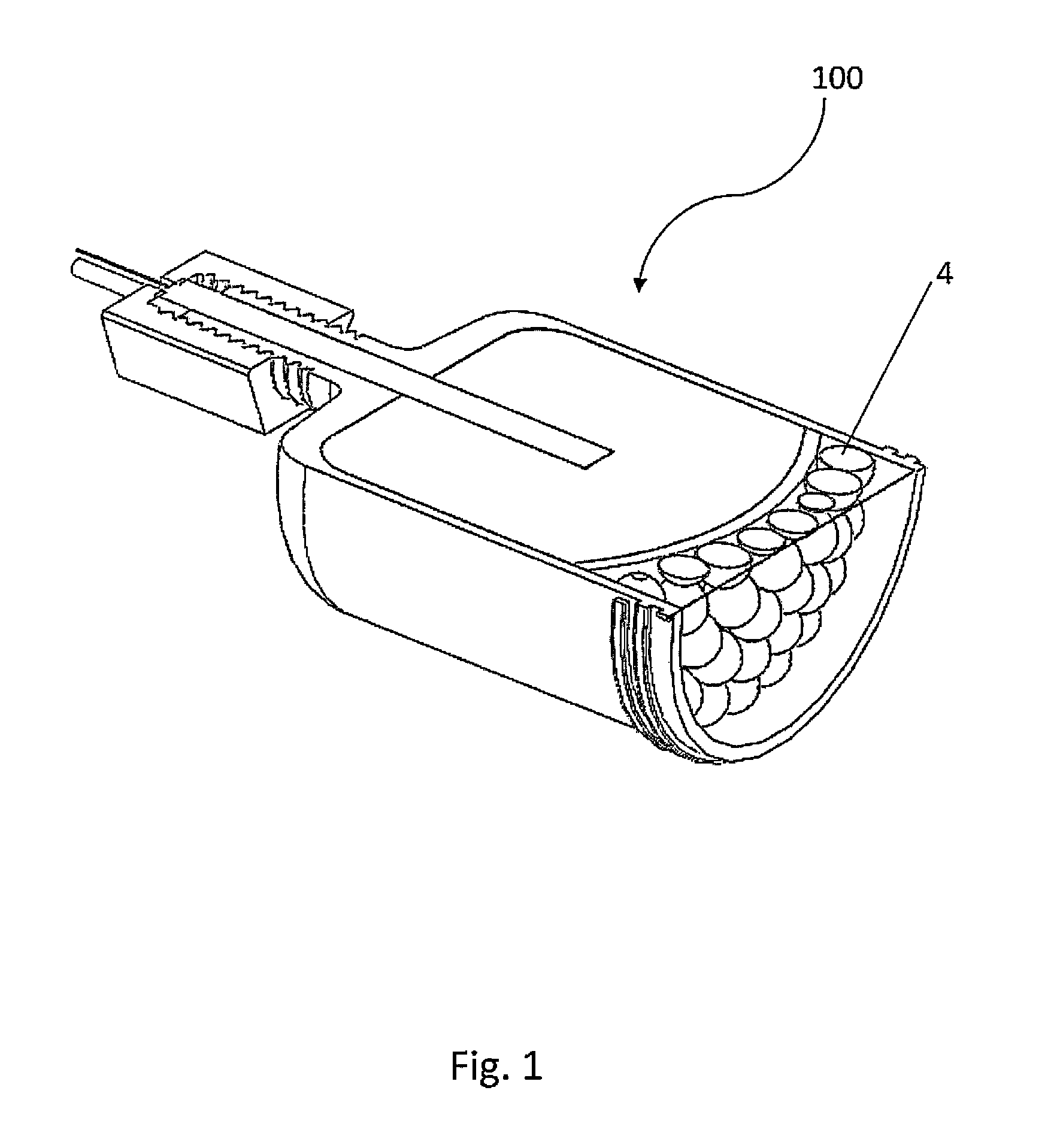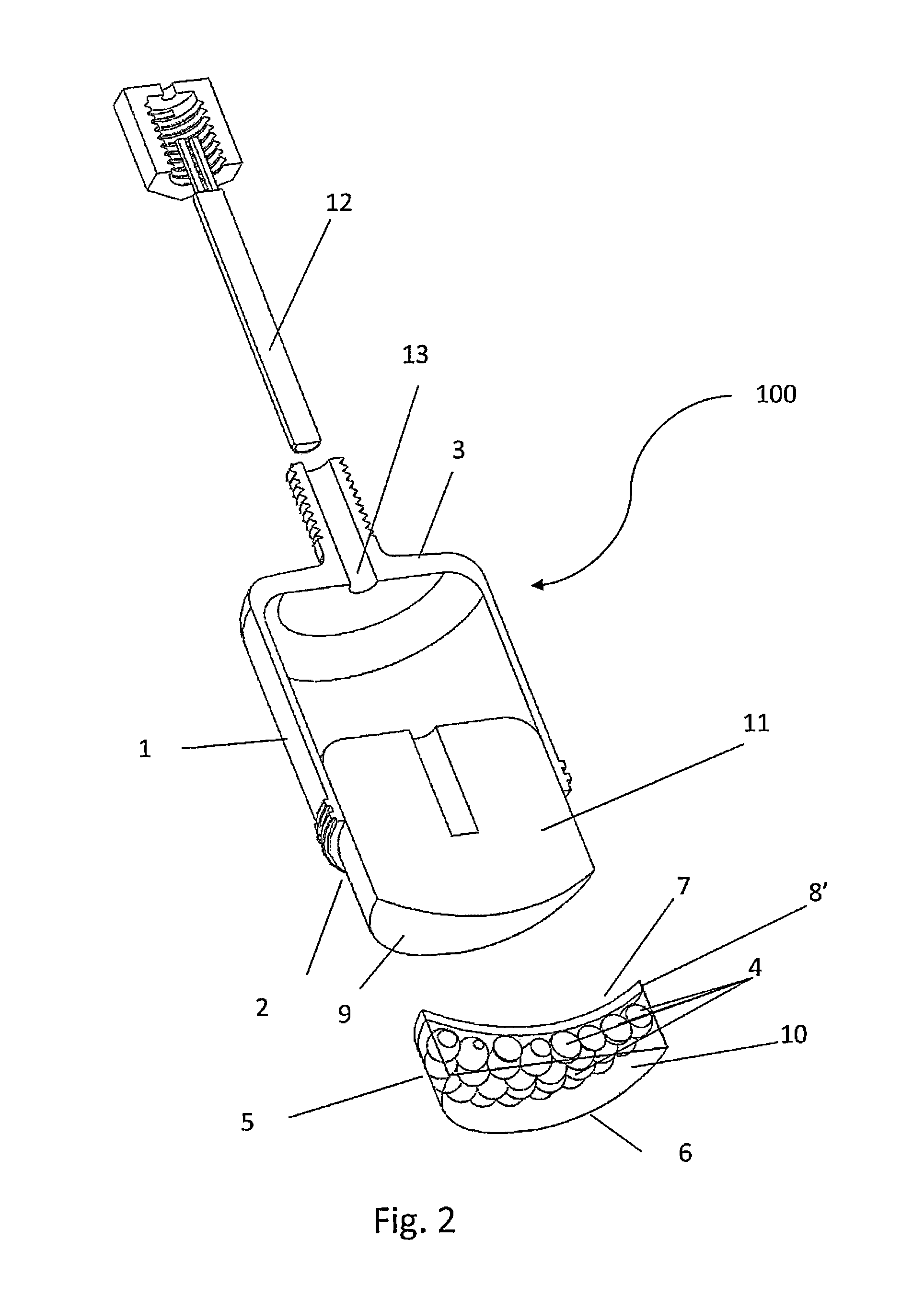Projector for defeating buried mines
a projector and mine technology, applied in the field of antimine systems, can solve the problems of complex disassembly and installation, inability to effectively and completely neutralize any mine, and inability to effectively and completely eliminate any mine, so as to minimize the likelihood of causing a sympathetic detonation, the effect of limited size and explosive
- Summary
- Abstract
- Description
- Claims
- Application Information
AI Technical Summary
Benefits of technology
Problems solved by technology
Method used
Image
Examples
Embodiment Construction
[0026]The invention, as embodied and described herein, and as shown in cut-away view in FIG. 1, is an explosively driven, fragment projecting anti-mine device (100), used for projecting an array of hard, spherical fragments (4), at a velocity within a specific range, over a specific area and through overfill (i.e. overburden) material, to effectively neutralize a buried anti-personnel mine, or other type of mine—wherein the relatively small and hard fragments do not spall, and wherein the size of the subject invention and quantity of explosive therein is such as to minimize and sympathetic explosions of other nearby mines. Further, the subject invention, as discussed herein, also surprisingly, blows the overburden from over the mine—to reveal it and aid in its safe removal.
[0027]Referring to FIG. 2, an anti-mine fragment projecting device of the present invention (100), comprising a tubular housing (1) having an open end (2) and a closed end (3), a puck (5), which is a polymer matri...
PUM
 Login to View More
Login to View More Abstract
Description
Claims
Application Information
 Login to View More
Login to View More - R&D
- Intellectual Property
- Life Sciences
- Materials
- Tech Scout
- Unparalleled Data Quality
- Higher Quality Content
- 60% Fewer Hallucinations
Browse by: Latest US Patents, China's latest patents, Technical Efficacy Thesaurus, Application Domain, Technology Topic, Popular Technical Reports.
© 2025 PatSnap. All rights reserved.Legal|Privacy policy|Modern Slavery Act Transparency Statement|Sitemap|About US| Contact US: help@patsnap.com



